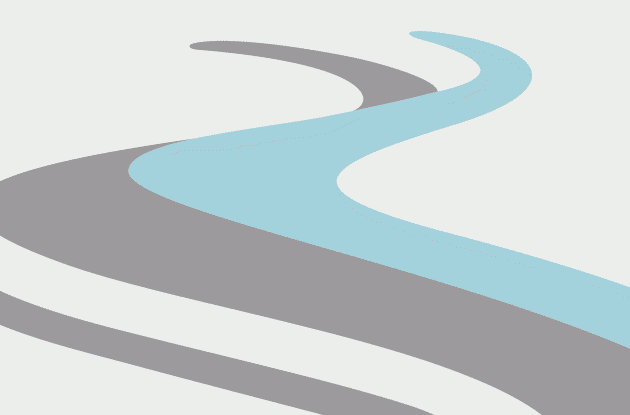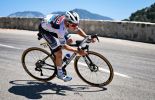Keys to Getting More Aero on the Bike
Over the years, there has been a lot written about optimizing your aerodynamic positioning. Most riders know that maintaining a low and narrow profile will save them time and effort in the ongoing struggle with wind resistance. Anyone who has ridden in an aerodynamic position has likely experienced the discomfort and inherent problems with maintaining it.
There is always a compromise with comfort, power output, efficiency and aerodynamics. Understanding how your body can adapt to a more streamlined position will make a noticeable difference in your performance. There are a few common difficulties for riders trying to be aero that can be improved with specific exercises, activations and stretches.
Fitting your body to your bike and/or your bike to your body is an ongoing process. Our bodies are constantly changing from any number of influences such as injuries, stress and aging. We are all walking reflections of our personal history. Things that you can do to reverse these negative body trends, I like to call body maintenance. Stretching, strengthening and massage are all well worth the time spent doing them. Consider that if you ignore body maintenance, you will likely exacerbate existing muscle imbalances and range of motion restrictions.
Once you have your bike fit and your aero setup done by someone with experience, it is then a matter of changing your body's limitations. As you improve your flexibility and strength, changes can be made to your bike setup to optimize your positioning.
Whether you choose to ride a road frame, a steep angle time trial setup or anything in between, your body has similar challenges. Every rider's performance depends on their being able to generate and maintain power for a given time and minimizing wind resistance. Developing strong and well-coordinated spinal and pelvic muscles is the key to improvement.
If you have poor core function, you lack a solid base of support to generate power from. This results in having inefficiently pedaling form, with power loss and improper muscle recruitment. This can also make you more susceptible to injury. What can you do to improve your core strength and stability? Below are some ideas to incorporate into your routine.
First, you should begin with stretching the following muscles groups. They are areas that are commonly tight and in need of improved range of motion. This should be done before riding to loosen and slightly inhibit these overactive muscle groups:
- Hamstrings - Place leg up on chair or stool and bend forward over straight leg. Isolate area by keeping back straight and bending from the hips.
- Hips/Glutes - sit with legs crossed and bent 90 degrees at knee. Stretch by pulling knee toward body and by pushing knee away from body. Try different angles to find tight spots.
- Lower Back - lying on back, gradually pull knees to chest using arms to increase the stretch. Bring knees to each side to find tight spots.
- Upper Trapezius - In seated position, hold under chair with hand of side to be stretched. Reach other hand over head and pull until you feel stretch.
- Chest - With straight arm, grab any fixed object and turn body away to open up chest. Change angle of arm- below shoulder height, level with shoulder and above shoulder.
Next you should do a few exercises/activations to reinforce proper muscle balance. Two core muscles that are critical and often under active are the deep abdominals (transverse abdominus) and a key back stabilizer called quadratus lumborum. Strengthening other middle and upper back muscles will assist in being aero and stable on your bike. These activations are intended to help improve function in commonly under active muscle groups:
- Deep Abdominals - Lie on your back with your knees up and feet flat on the floor. Place your hands under your lower back at the level of your navel. Activate by pulling in below your navel and trying to push your low back into your hands with as much force as you can. You can do short pulses and/or long holds. Work up to two sets of 15 reps.
- Quadratus Lumborum - Activation will improve range of motion and coordination of this key muscle. Think of this as the bridge between you upper and lower bodies. Lie flat on your back with legs straight. Extend your left ankle and flex your right. Now slowly slide your left leg down and bring your right leg up, keeping both legs straight and on the floor. This should feel like a shift of the hips. Now reverse and continue to alternate, trying to increase range of motion as you go. Start with five cycles and work up to two sets of 15.
- Full Back Extension - This can be done on the floor, on a back extension device or preferably on a stability ball. Start face down and with your arms extended out to the side, palms facing your feet. In one smooth and slow movement, raise your torso up and raise your straight arms up and back until your palms face the sky. Slowly lower to the start position and repeat. Work up to two sets of 15 reps.
- Back Torsion - This can be done on the floor or on a stability ball. Start on your hands and knees with your back straight. Hands should be directly under your shoulders and knees directly under your hips. From this position, lift your left arm and right leg off the floor and try to keep your hips level with the floor. Slowly extend the arm and leg at a 45 degree angle from the body. Hold for ten seconds and return to start position. Alternate sides and work your way up to two sets of 10.
Taking fifteen minutes before your ride to go through this routine will prepare your body for the demands you are placing on it. Over time you should feel more comfortable in the aero position and be able to generate more power from your improved stability.
Finally, riding in the aero position is a challenge for anyone and arguably an unnatural request on the body. Have patience in developing this skill and try to increase the amount of time you spend in the aero position gradually and deliberately. Preparing for any distance race you will embark on should include a plan for preparing your body to be in the aero position. Specificity of training is paramount in any endeavor and should be respected with regard to aero position.
Tim Monaco is a Certified Eliteform coach for CTS. For more info on Tim, CTS, and their coaching product offers, visit their web site.
Want more training advice? -- buy training-related books in our bookstore








